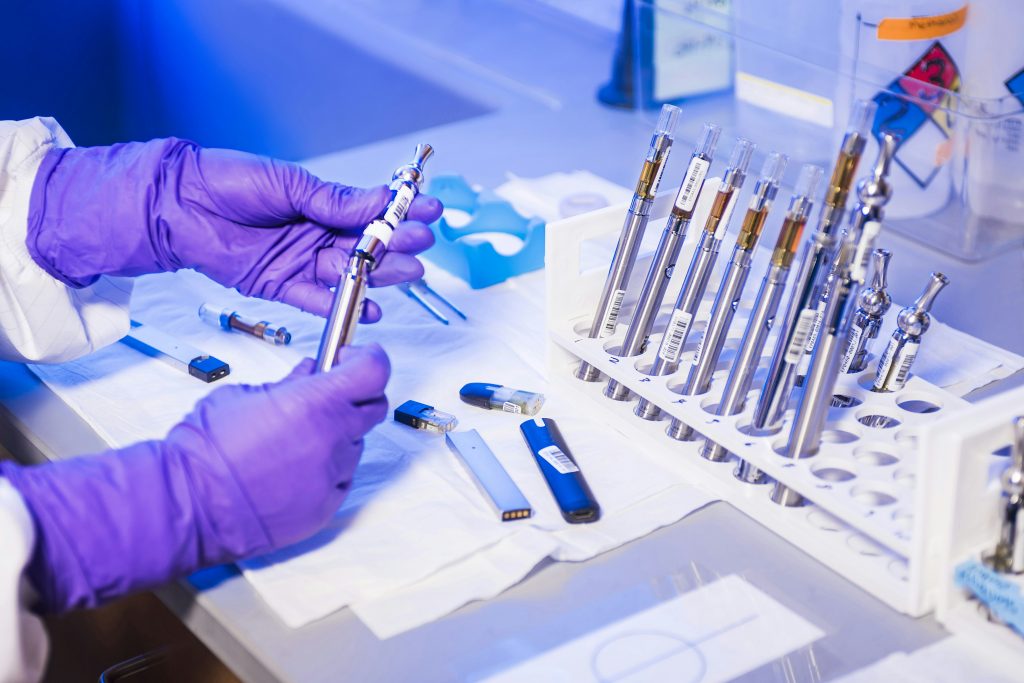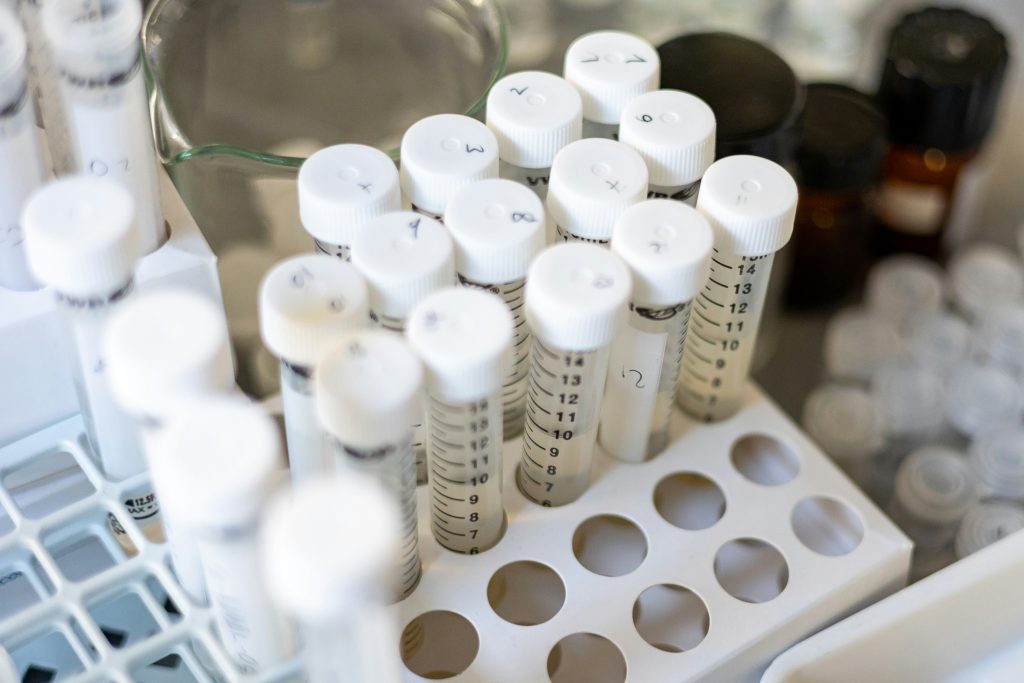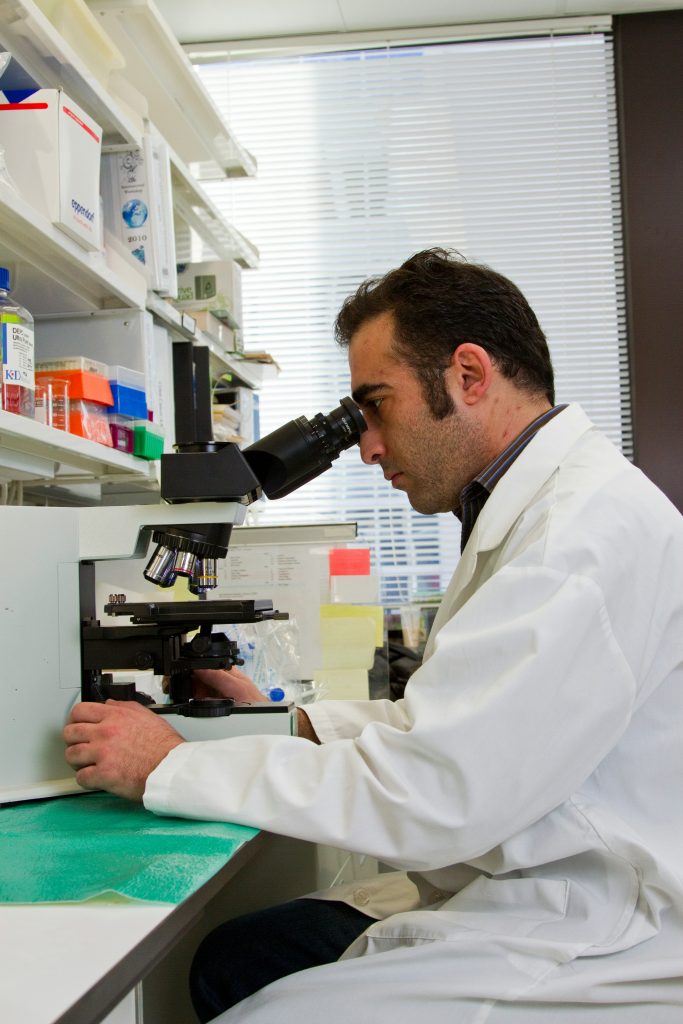Table of Contents
ToggleSemen Analysis Explained: Key Parameters for Your Health

In the realm of male reproductive health, semen analysis is a critical diagnostic tool that evaluates the quality and quantity of semen and sperm to diagnose infertility issues. At LabTestsDubai.com, timely semen analysis helps guide healthcare professionals and patients in making informed reproductive decisions. Male fertility may be affected by testicular function, hormonal balance, and lifestyle factors. This article reviews key parameters—sperm count, motility, morphology, volume, and pH—and explains how abnormal values can indicate conditions such as retrograde ejaculation, ejaculatory duct obstruction, congenital absence of the vas deferens, or Klinefelter syndrome.
Understanding these parameters empowers patients to take proactive steps—from lifestyle changes to advanced treatments like intracytoplasmic sperm injection (ICSI) or in vitro fertilisation (IVF)—to improve reproductive health. The article also emphasizes maintaining a healthy lifestyle, since factors like diet, exercise, smoking, and exposure to toxins significantly influence sperm production and function. An evidence-based approach is provided on standard reference ranges, the clinical significance of each parameter, and how to interpret results for appropriate treatment strategies.
Transitioning into the detailed sections, the discussion covers semen analysis methodology, normal ranges for key parameters, factors affecting sperm quality, and treatment options for abnormal findings.
What Is Semen Analysis and Why Is It Important for Male Fertility?
Semen analysis is a laboratory test used to assess the quality of semen and sperm in diagnosing male infertility. It evaluates parameters such as sperm count, motility, morphology, volume, and pH, which collectively determine the sperm’s ability to fertilize an egg. This test is the first step in diagnosing conditions like asthenozoospermia (reduced motility), teratozoospermia (abnormal morphology), and oligozoospermia (low sperm count).

How Is Semen Analysis Performed?
The process involves collecting a semen sample through masturbation after 2–7 days of sexual abstinence. The sample is examined under a microscope using standardized laboratory techniques. Key parameters such as concentration, motility, and morphology are measured with automated systems or manual counts. Additionally, the pH is determined to assess the chemical environment of the semen, and advanced tests may evaluate sperm DNA fragmentation and white blood cell presence.
Who Should Get a Semen Analysis?
Men experiencing conception difficulties, particularly after a year of unprotected intercourse, should consider semen analysis. It is also advised for individuals with a history of urological issues, genetic abnormalities, toxin exposure, or surgeries affecting reproductive organs. Men being evaluated for retrograde ejaculation or ejaculatory duct obstruction, and couples planning for ART procedures like IVF or IUI, benefit from baseline semen analysis.
What Are the Benefits of Semen Analysis for Reproductive Health?
Semen analysis offers early detection of fertility issues, aids in selecting appropriate treatments, and helps monitor treatment success. With objective data on reproductive parameters, healthcare providers can customize therapies such as hormonal treatments or lifestyle modifications. The test may also reveal underlying conditions like infections or obstructions, helping couples decide whether conventional insemination or advanced techniques like ICSI are necessary to overcome fertilization challenges.
What Are the Key Semen Analysis Parameters and Their Normal Ranges?
Semen analysis examines multiple parameters that offer insights into sperm health and overall fertility. The key measures include sperm count, motility, morphology, volume, and pH. Knowing the normal ranges is essential for accurate diagnosis.
What Is Sperm Count and What Are Normal Levels?
Sperm count is the number of sperm per milliliter of semen. The World Health Organization indicates that a concentration of 15 million sperm per milliliter or higher is normal. A low count, known as oligozoospermia, can reduce the chance of fertilization and may result from lifestyle factors or medical issues like varicocele or hormonal imbalances. Regular screening helps detect early reproductive deficiencies.
How Is Sperm Motility Measured and What Is a Healthy Range?
Sperm motility indicates the percentage and quality of moving sperm. For effective fertilization, at least 40% of sperm should be motile, with 32% demonstrating progressive movement. Poor motility (asthenozoospermia) may result from oxidative stress, smoking, or infections. Classifying sperm as progressive, non-progressive, or immotile helps clinicians decide on treatment or lifestyle changes to improve motility.
What Does Sperm Morphology Indicate About Fertility?
Sperm morphology evaluates the structure of sperm—including the head, midpiece, and tail. A normal morphology is defined by having at least 4% of sperm with an optimal shape. Abnormalities may point to genetic defects, exposure to toxins, or varicocele. Morphology analysis is vital for predicting fertilization potential and may guide the decision to use assisted reproductive techniques such as ICSI when abnormalities are high.
Why Is Semen Volume Important and What Are Normal Values?
Semen volume, typically between 1.5 and 5.0 mL, ensures enough sperm are available for fertilization. Low volume may indicate blockages or issues with the seminal vesicles or prostate gland. Seminal fluid also provides nutrients and protection to sperm; thus, adequate volume is crucial for maintaining motility and viability.
What Does Semen pH Reveal About Reproductive Health?
Semen pH is measured on an acidity-alkalinity scale, with a normal range between 7.2 and 8.0. A neutral to slightly alkaline pH protects sperm from the acidic female reproductive tract. Deviations in pH can signal infections or dysfunction in accessory glands, affecting sperm motility and survival.
How Do Abnormal Semen Parameters Affect Male Fertility?
Abnormalities in any semen parameter can drastically reduce the chance of fertilization. Whether low sperm count, poor motility, or abnormal morphology, each irregularity indicates underlying issues and requires a tailored treatment strategy.
What Causes Low Sperm Count and How Is It Diagnosed?
Low sperm count (oligozoospermia) is diagnosed when sperm concentration is under 15 million per milliliter. Causes include hormonal imbalances, varicocele, lifestyle factors such as smoking and alcohol use, and environmental toxins. Genetic conditions like Klinefelter syndrome or congenital absence of the vas deferens also contribute. Diagnosis involves clinical evaluation, hormonal tests, and repeated semen analyses.
What Are the Reasons for Poor Sperm Motility?
Poor motility (asthenozoospermia) can arise from oxidative stress, excessive alcohol use, smoking, or infections. Mitochondrial dysfunction in sperm cells, heat exposure, and toxins also play a role. Detailed motility assessment allows for interventions such as antioxidant therapy, lifestyle modifications, and treatment of infections to improve sperm movement.

How Does Abnormal Sperm Morphology Impact Fertility?
Abnormal sperm shape (teratozoospermia) can hinder sperm from reaching or penetrating the egg, even if count and motility are normal. Causes include genetic factors, environmental toxins, and poor lifestyle habits. When morphology is abnormal, assisted reproductive techniques like ICSI may help by bypassing natural fertilization barriers.
What Is the Role of White Blood Cells and Antisperm Antibodies in Semen?
The presence of white blood cells (leukocytospermia) suggests infections or inflammation, which can damage sperm. Furthermore, antisperm antibodies may develop if the immune system mistakenly attacks sperm, reducing their motility and fertilizing ability. Both issues require appropriate treatment—antibiotics or immunosuppressives—to protect sperm function.
What Is Sperm DNA Fragmentation and Why Does It Matter?
Sperm DNA fragmentation measures the integrity of genetic material. High fragmentation correlates with lower fertilization rates, poorer embryo quality, and a higher risk of miscarriage. Increased fragmentation may result from oxidative stress, aging, or toxin exposure. Testing is crucial in cases of unexplained infertility, guiding interventions such as antioxidant therapy or specialized ART procedures like ICSI.
How Can You Interpret Your Semen Analysis Results?
Interpreting semen analysis involves comparing each parameter to established reference ranges. Normal values indicate healthy semen, while low or high values can signal issues such as oligozoospermia, asthenozoospermia, or accessory gland dysfunction. Results should be evaluated alongside patient history, lifestyle factors, and additional tests, often in consultation with urologists or fertility specialists.
What Do Normal, Low, and High Values Mean for Each Parameter?
Normal values across sperm count, motility, morphology, volume, and pH indicate a healthy reproductive status. Low values may lead to difficulties in conception, while high values in certain parameters, like volume or pH, might indicate issues such as infections or gland dysfunction. Understanding these distinctions is essential for appropriate diagnosis and treatment.
When Should You Consult a Specialist After Semen Analysis?
Any abnormal result should prompt consultation with a specialist. Urologists or reproductive endocrinologists can perform further evaluations and recommend interventions ranging from lifestyle modifications to advanced reproductive technologies. Persistent abnormalities, especially in sperm count, motility, or DNA fragmentation, require prompt attention to improve conception outcomes.
How Are Semen Analysis Results Used to Diagnose Male Infertility?
Semen analysis results, when combined with patient history, physical exams, and hormonal tests, help diagnose underlying causes of male infertility. This comprehensive approach allows healthcare providers to identify spermatogenic dysfunction, obstruction, or immunological issues, enabling tailored treatment strategies.
What Lifestyle Factors Influence Semen Quality and How Can You Improve Them?
Semen quality is highly sensitive to lifestyle factors. A healthy weight, balanced diet rich in antioxidants, and regular moderate exercise can improve sperm quality, while smoking, excessive alcohol, and exposure to toxins have detrimental effects. Addressing these factors through lifestyle changes is one of the most effective ways to enhance male fertility.
How Does Diet and Nutrition Affect Sperm Health?
A nutrient-dense diet supports spermatogenesis and overall sperm health. Vitamins such as C and E, folate, and minerals like zinc and selenium improve sperm count and motility. Diets rich in antioxidants help reduce oxidative stress, protecting sperm DNA and enhancing structure and function.
What Is the Effect of Exercise and Weight Management on Fertility?
Regular moderate exercise improves cardiovascular health, hormonal balance, and sperm production. Conversely, obesity can lead to hormonal imbalances and increased scrotal temperature, impairing sperm quality. A balanced exercise routine helps maintain healthy testosterone levels, promoting better reproductive function.
How Do Smoking, Alcohol, and Substance Use Affect Semen Parameters?
Smoking and excessive alcohol consumption are linked to oxidative stress and inflammation in the testes, which reduce sperm count and motility while increasing DNA fragmentation. Recreational drugs may further impair hormonal regulation. Reducing or eliminating these substances is crucial for improving semen quality.
What Environmental and Stress Factors Can Harm Sperm Quality?
Exposure to heavy metals, pesticides, and industrial chemicals can induce oxidative stress and inflammation that harm sperm quality. Chronic stress raises cortisol levels, interfering with normal sperm production. Reducing environmental toxin exposure and managing stress through mindfulness and proper sleep are important steps for safeguarding sperm health.
What Are the Treatment Options for Abnormal Semen Analysis Results?
When semen analysis results fall outside normal ranges, several treatment options are available. These range from medical and lifestyle modifications to surgical interventions and assisted reproductive technologies (ART). Early diagnosis paired with individualized treatment planning is key to reversing or managing these abnormalities.
What Medications Are Available for Male Infertility?
Medications such as clomiphene citrate and gonadotropins can stimulate testosterone production and spermatogenesis. Antioxidants like vitamin E and coenzyme Q10 help combat oxidative stress, while antibiotics may be prescribed if infections are present. The choice of medication depends on the specific hormonal and metabolic factors identified during evaluation.
When Are Surgical Procedures Recommended?
Surgical options, such as varicocelectomy, are considered when structural abnormalities (e.g., varicocele or ejaculatory duct obstruction) are the primary cause of infertility. Correcting these issues can improve sperm count and motility. Such procedures are typically undertaken after thorough diagnostic confirmation.
How Do Assisted Reproductive Technologies Like IUI and IVF Help?
Assisted reproductive technologies provide solutions when natural conception is challenging due to abnormal semen parameters. Intrauterine insemination (IUI) concentrates motile sperm directly into the uterus, while in vitro fertilisation (IVF) and intracytoplasmic sperm injection (ICSI) involve fertilising eggs in the laboratory. ICSI is especially beneficial for very low sperm count or motility, as it bypasses natural barriers to fertilisation.
What Role Does Sperm DNA Fragmentation Testing Play in Treatment Planning?
Measuring sperm DNA fragmentation helps assess genetic integrity. Elevated fragmentation levels can lower fertilisation success, impair embryo development, and increase miscarriage risk. This information allows healthcare providers to tailor interventions such as antioxidant supplementation, lifestyle changes, or advanced ART procedures.
How Can You Prepare for a Semen Analysis Test?
Proper preparation is essential for accurate semen analysis results. This involves adhering to the recommended abstinence period and following specific guidelines for sample collection to avoid contamination.
What Are the Best Practices for Sample Collection?
Samples should be collected in a private, sterile setting. Patients must wash their hands thoroughly and use a sterile container provided by the laboratory to collect the entire ejaculate. Avoiding lubricants unless directed by a healthcare provider is necessary, as such products may alter the sample’s composition.
How Long Should You Abstain Before Testing?
A 2 to 7-day period of sexual abstinence is recommended before providing a semen sample. This allows sperm to accumulate to a measurable level. Following the clinician’s guidelines ensures that the sample reflects a consistent baseline.
What Factors Can Affect Test Accuracy?
Several factors can influence test outcomes, including recent illness, stress, certain medications, and improper handling of the sample. Strict adherence to pre-test instructions and standardized laboratory protocols is vital for obtaining an accurate representation of sperm health.
Table: Semen Analysis Parameter Overview
Below is a summary table comparing key semen analysis parameters, their normal ranges, and clinical significance.
Before the table, it is important to understand that these parameters collectively provide insight into male fertility status.
| Parameter | Normal Range/Value | Clinical Significance | Related Conditions |
|---|---|---|---|
| Sperm Count | ≥15 million/mL | Indicates adequate sperm density; low count suggests oligozoospermia | Varicocele, hormonal imbalance |
| Sperm Motility | ≥40% motile (≥32% progressive) | Essential for successful fertilization; poor motility denotes asthenozoospermia | Oxidative stress, lifestyle factors |
| Sperm Morphology | ≥4% normal forms | Reflects structural integrity; abnormal forms impact fertilization potential | Teratozoospermia, genetic defects |
| Semen Volume | 1.5–5.0 mL | Sufficient volume ensures adequate transport medium for sperm | Ejaculatory duct obstruction, infections |
| Semen pH | 7.2–8.0 | Maintains sperm viability; deviation may indicate accessory gland dysfunction | Prostatitis, accessory gland disorders |
After reviewing this table, clinicians and patients can better understand each parameter’s significance and its implications for overall reproductive health.
Frequently Asked Questions
Q: What is the purpose of a semen analysis? A: It evaluates the quality and quantity of semen—including sperm count, motility, morphology, volume, and pH—to understand fertility and diagnose conditions like oligozoospermia and asthenozoospermia.
Q: How many days should one abstain before providing a semen sample? A: A sexual abstinence of 2 to 7 days is recommended to ensure optimal sperm concentration for an accurate assessment.
Q: What lifestyle changes can improve semen quality? A: Adopting a nutrient-rich diet, engaging in regular moderate exercise, reducing exposure to toxins, and lowering stress levels can markedly improve semen quality.
Q: How is poor sperm motility diagnosed and treated? A: It is diagnosed through microscopic evaluation of moving sperm. Treatment may include antioxidant therapy, lifestyle modifications, and addressing infections or hormonal imbalances.
Q: When should one consider assisted reproductive technologies following an abnormal semen analysis? A: If semen parameters remain abnormal after repeated testing and interventions, assisted reproductive techniques such as IUI, IVF, or ICSI may be considered based on individual case evaluations.
Q: Can semen analysis results vary from test to test? A: Yes, results can vary due to factors like abstinence duration, recent illnesses, stress, and environmental influences. Repeat testing is often recommended to confirm a diagnosis.
Final Thoughts
This detailed exploration of semen analysis parameters underscores their importance in understanding and improving male fertility. An accurate assessment not only diagnoses infertility but also guides targeted treatment strategies—from lifestyle modifications to advanced reproductive technologies. By following best practices in sample collection and interpretation, both patients and clinicians can make informed decisions to enhance reproductive outcomes. With ongoing advances in diagnostics and personalized treatment plans, optimizing semen quality is an achievable goal for those seeking improved reproductive health.

